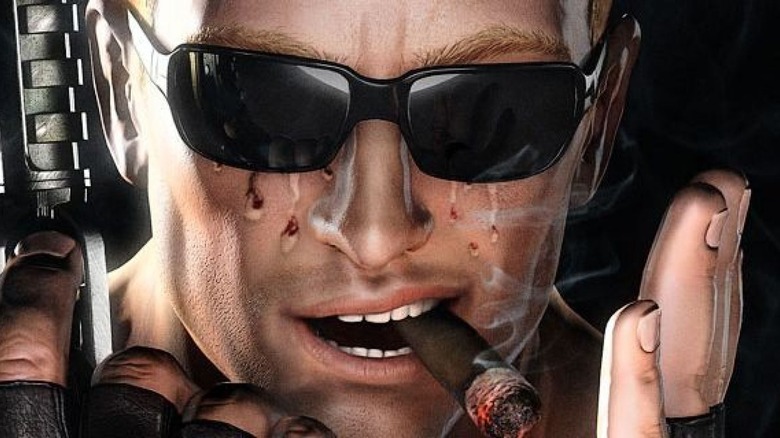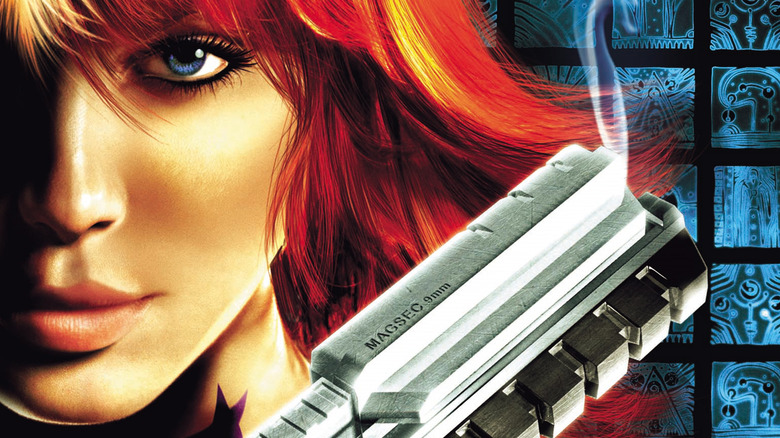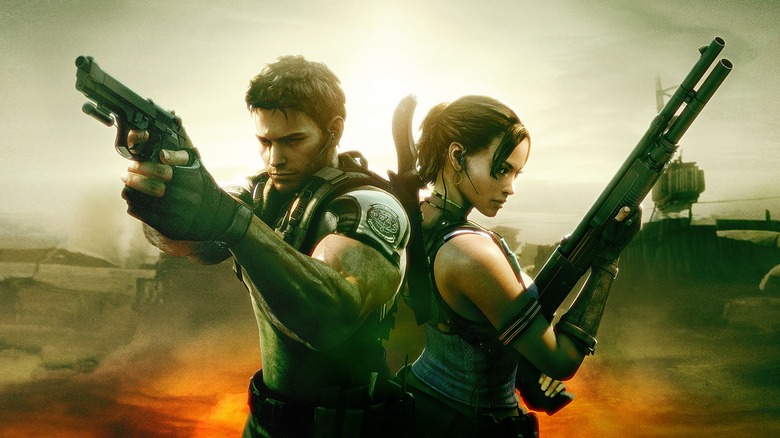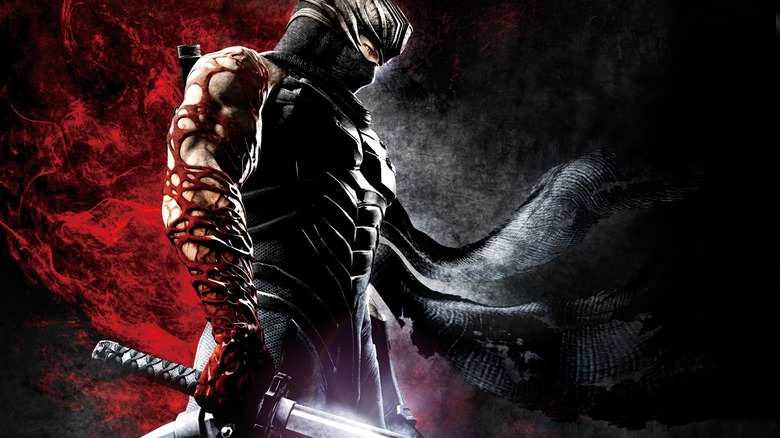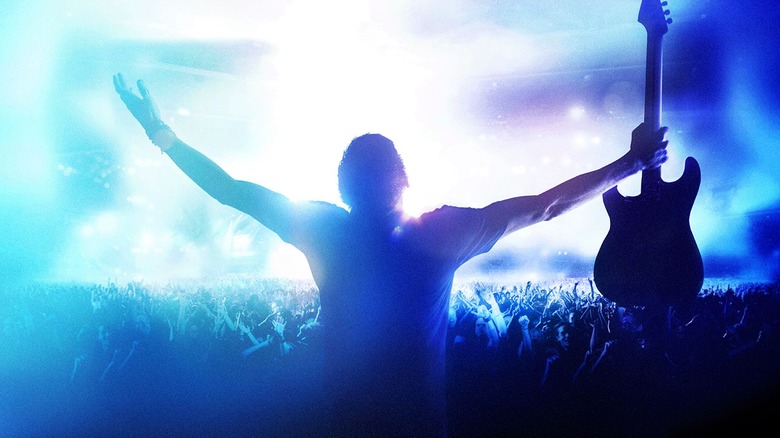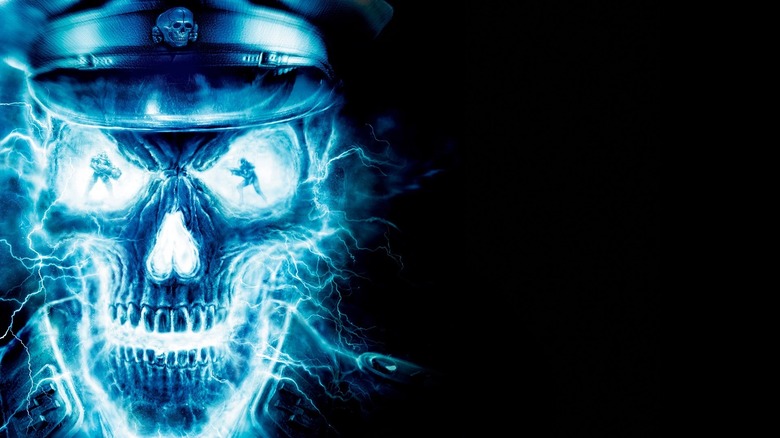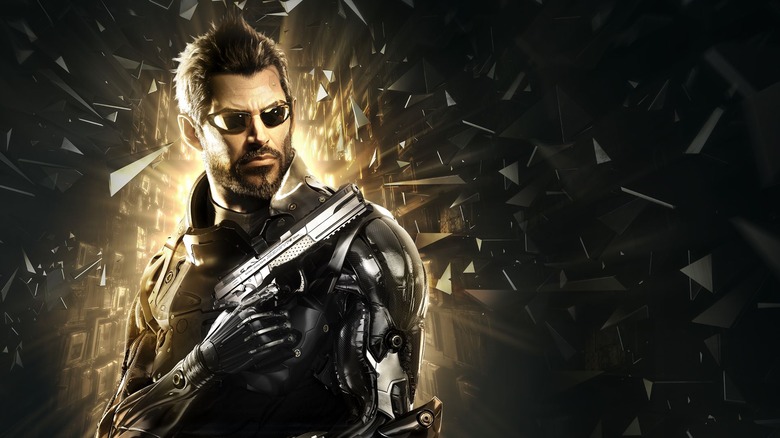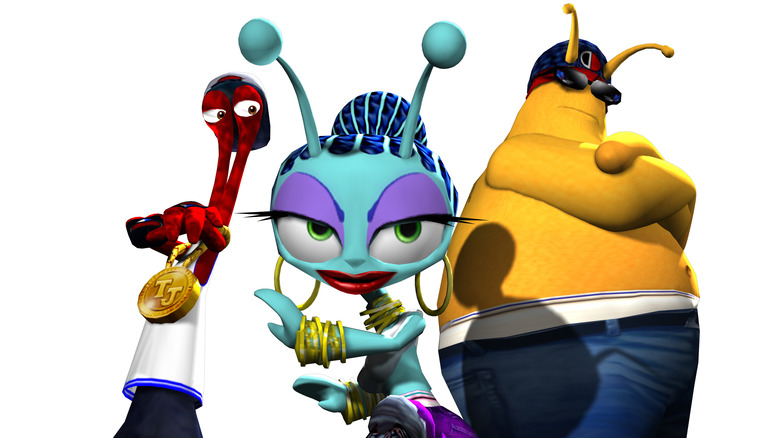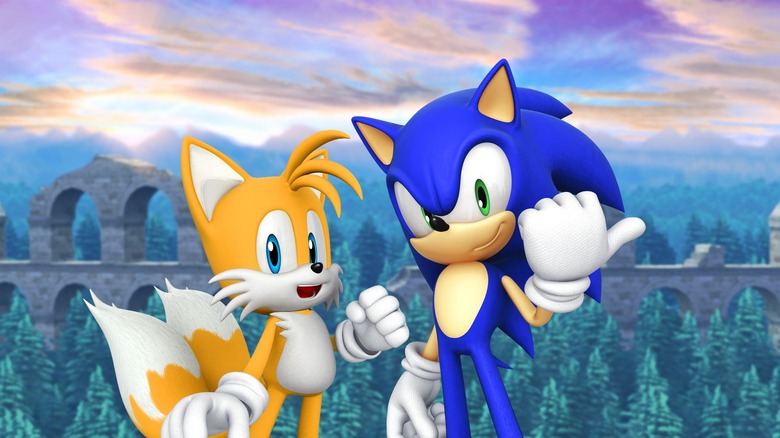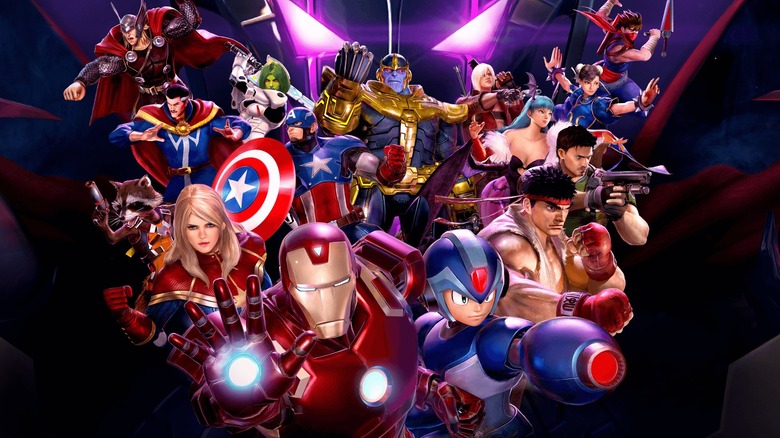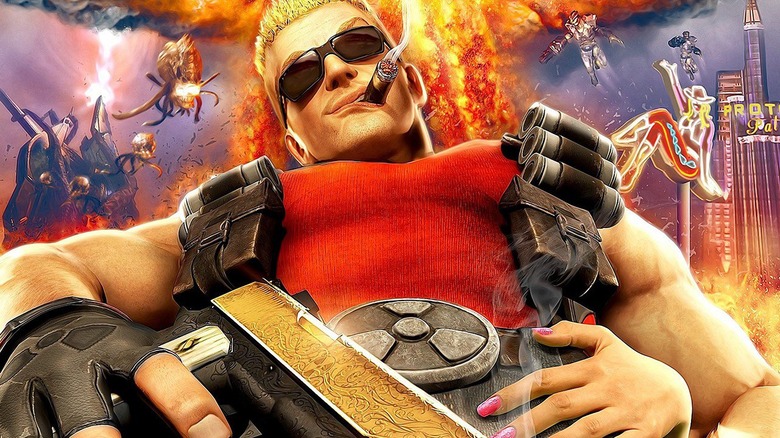Game Sequels That Weren't Worth The Wait
There's an old showbiz idiom, "Always leave 'em wanting more." Unlike most entertainment, video games, as a medium, are terrible at this. If a game was successful, you will get as many sequels as you can stand. Time tends to be the big issue, and to the industry's credit, good things do often come to those who wait in this industry. Considering Assassin's Creed games were on a yearly schedule until very recently, it's mind-boggling there are as many good-to-great ones as there are. You also have Final Fantasy 15, a game that took 10 years to make, but is also one of the best games the series has delivered in years.
There is, however, the other side of the spectrum: the games that made players wait so very long for the comeback, and the reward for their patience was, well, not worth the effort for anyone involved. There are plenty of examples of this, and we've got a list of some of the worst offenders, the series that should've just stayed gone if these games were the result.
Perfect Dark Zero
The Wait: 5 Years
GoldenEye and Perfect Dark are lightning in a bottle as far as their legacy goes. They were impressive for being deep, well-executed first-person shooters on console at a time when first-person shooters were primarily the dominion of PC games. The first Halo would take the genre the rest of the way into being fully mainstream for console gamers, but Perfect Dark was the kind of full-on first-person futuristic spy thriller you still rarely see in games.
The series would then skip the 128-bit era altogether, letting giants like Half-Life, Halo, and Metroid Prime rule the roost, but after jumping ship from Nintendo to Microsoft, gamers salivated imagining Perfect Dark with none of the technical limitations that plagued the original title. They got that, at least. They also got one of the most mind-meltingly boring first-person shooters of the entire generation.
Gone were the first game's Bond-lite story and character trappings, gone was much of the quirkier X-Files-y elements that made the N64 game engaging, gone were the wilder weapons. In were generic stock characters, a series of uninspiring environments, and a sleeper of a plot. Microsoft couldn't squeeze a truly brilliant game out of Rare the way Nintendo had, and considering the franchise is all but dead in the water now, it might've been better if they hadn't tried.
Resident Evil 5
The Wait: 4 Years
Resident Evil 4 is, ironically, an example of the best-case scenario for being patient: it was five years between Code Veronica and RE4, and 4 would end up overhauling the mechanics of the entire series, top to bottom. The result is just one of the greatest games of the 21st century. What do you do for a follow-up, then? Well, hopefully not Resident Evil 5.
Conceptually, setting a sequel to Resident Evil 4 in Africa isn't the worst idea if handled with sensitivity; there's plenty of horrifying Serpent and the Rainbow/White Zombie-type stories to draw on for inspiration to keep it in line with the creepy Hammer horror vibe of RE4. The opposite ended up happening with RE5, though. It went all-in on some of the most embarrassing, borderline racist caricatures of African life, used 24 as inspiration more than the pulse-pounding "guns aren't enough" ethos of its predecessor, and foisted co-op on the whole endeavor, seemingly unaware of how much isolation contributes to the series. It's not that these things can't be in a Resident Evil game — the Chronicles titles are a lot of fun! — but the way RE5 used them fell way short of the mark. Thankfully, Capcom learned from that mistake and didn't blow the clean-slate opportunity that Resident Evil 7 gave the series after everyone hated RE6.
Ninja Gaiden 3 (2012)
The Wait: 4 Years
Before there was Dark Souls, Team Ninja's reboot of Ninja Gaiden was the go-to game for folks looking to "git gud" and truly test their mettle. Under the exacting direction of noted rockstar developer Tomonobu Itagaki, the first two games of the Xbox series are flashy but demand the absolute best from its players. Itagaki left Team Ninja shortly before Ninja Gaiden 2 released, and that should've been the end of the Ninja Gaiden games. But Team Ninja stubbornly soldiered on, and made a Ninja Gaiden 3 without him. After four years waiting, the result was a mess.
Yes, it's well established that all ninjas do is flip out and kill people, but there's an art to it in the first two Ninja Gaiden titles that's absent in NG3. No Essence mechanics, few weapons, none of the cool Japanese mythology, not even the simple joys of lopping off heads ad nauseum. In their place is oversimplified combat and a QTE mechanic that allows you to really get deep and think about all the violence you're committing, because surely that's what you're playing a modern Ninja Gaiden title for, right?
The game did get a sort of do-over in the form of the enhanced Wii U port Ninja Gaiden 3: Razor's Edge, but even that doesn't fix everything. Still, it could've been worse: it could've been Yaiba: Ninja Gaiden Z.
Guitar Hero Live
The Wait: 5 Years
The music game boom was sweet (and expensive) while it lasted, but in 2010, no one was surprised when both Activision and Harmonix decided to put their respective franchises to bed. Thing is, Rock Band went out with grace, releasing Don McLean's "American Pie" as their final DLC track. Meanwhile, Guitar Hero went out with the overstuffed and overcomplicated Warriors of Rock.
So, when both franchises came back for their reunion tour in 2015, it wasn't a surprise Activision had a chip on their shoulder. If Rock Band 4 was a tour where Harmonix went out, played their greatest hits, and went home, Guitar Hero Live was a tour where Activision played none of the old stuff, pimped a new pop album, and charged $22 for bottles of water.
It started with the guitar: a complex redesign that added an interesting, realistic twist to the plastic instrument genre, but made the game harder as a result. That might've been cool if you were able to look suitably cool playing a killer collection of songs, but the mix of tracks is an odd one made odder with the aesthetic: a full-blown FMV audience like something straight off the Sega CD. Combined with a weird "rental" mechanic for the game's music-streaming DLC — which also happens to be where all the good tracks are hiding — and it's a game trying to be everything and pleasing no one as a result.
Wolfenstein (2009)
The Wait: 8 Years
Wolfenstein is pretty much the series that begat the first-person shooter, and it's got an all-timer evergreen premise: kill every Nazi you see. The franchise did take a hell of a long break after 2001's Return to Castle Wolfenstein, though. When it came back with a game that made only marginal improvements to the tried and true formula, it found itself a game out of time.
2009's Wolfenstein isn't necessarily an unplayable abomination or anything. It's a perfectly adequate if all you need is to run around tight corridors shooting anything that moves. The problem is, it was excruciatingly generic at a time when FPSs were anything but. This was a year of the first Borderlands, Modern Warfare 2, and a solid redux of that ambitious Chronicles of Riddick game from 2005. Meanwhile, the one unique part of Wolfenstein, the Veil mechanic, had been done better as Spirit Walk three years prior in the still-underappreciated original Prey. For Wolfenstein to not bring anything new to the table after eight years away was immensely disappointing. Thankfully, MachineGames would make up for lost time in a major way five years later with the bold and brilliant Wolfenstein: The New Order.
Deus Ex: Mankind Divided
The Wait: 5 Years
The Deus Ex games are incredible detailed, intricate cyberpunk worlds, so it's not exactly a surprise that they take so many years to make, and considering the gap between Invisible War and Human Revolution was seven years, it damn well better have turned out as good as it did. Needless to say, hopes were high from the second it was announced that Mankind Divided would follow suit. Unfortunately, things had changed in the industry in those five years.
Sure, the whole idea of mechanical apartheid brought up by the game's developers was too on-the-nose for its own good, and there's some iffy stuff in the game itself that follows suit, but most players would have been willing to still praise the actual game. But player goodwill had been spent long before the game hit shelves with a pre-order pyramid scheme. That, in turn, was but a harbinger for how hideously unbalanced the game's microtransactions had made it, with not just the enormous number of items up for sale, but how many were single-use, even as part of the pre-order DLC. It all combined to turn the respected series' usual mix of strategy and innovation into a blatant pay-to-win situation, one that made Mankind Divided nowhere near as highly regarded as its predecessors.
ToeJam & Earl 3: Mission to Earth
The Wait: 9 Years
The early days of the console wars between Sega and Nintendo were fought over who could be cooler and edgier than the other. One of the major shots fired was ToeJam & Earl, a game about an alien hip-hop duo that crash lands on Earth and has to deal with us lame humans and our lame crap while they search for the broken pieces of their ship. The '90s hip-hop vibe of the first Genesis game and its sequel, Panic on Funkotron, were — and still really are — unique in gaming.
So, it made sense that when hip-hop started to become THE dominant music of the early 21st century, a new ToeJam & Earl should have been an easy slam dunk. For what it's worth, the alien characters and their humor were perfect. The problem was everything else.
ToeJam & Earl 3: Mission to Earth is a perfect setup derailed by a completely generic collect-a-thon, indiscernible from Donkey Kong 64 or Banjo-Kazooie, with everything cool and urban about the property relegated to the cutscenes. It's a game that had a perfect shot and blew it, forcing the property to disappear for another 17 years. 2019's Back in the Groove definitely recaptured much of the original magic, but the series has always deserved better.
Sonic the Hedgehog 4
The Wait: 16 Years
Sonic's rise and fall almost needs no introduction. From 1991 to 1994, Sonic was just as much the face of video games as Mario. But just like silent stars had to get used to talkies, so did Sonic have to convert to 3D, and the the Blue Blur was never the same. Sure, Sega kept hope alive on handhelds, but nothing ever reached the towering heights of the originals (though Sonic Rush came closest).
So, everyone was rightfully excited when Sega finally went back to the drawing board, and made a proper 2D Sonic sequel for consoles. But just like most of Sega's promises when it comes to Sonic, the end result wasn't quite what players expected.
Sonic 4 is trying, at least, to recapture some of that old magic. Occasionally, the spark is there, mostly in Episode 2. But everything about the game, from the plastic-looking graphics, to the childish soundtrack, to the stiff physics for Sonic himself, just feels off. It wasn't bad, but it wasn't quite what fans were looking for after almost two decades away, either.
Thankfully, true salvation eventually came in 2017, when Sega let their Sonic remaster guru, Christian Whitehead, and a badass team of ROM hackers and retro enthusiasts make Sonic Mania, resulting in one of the best games in the entire series and a renewed excitement for the character. Well, until this happened.
Marvel vs Capcom Infinite
The Wait: 6 Years
When Marvel vs Capcom Infinite dropped, the Avengers were household names, and Street Fighter tournaments were some of the most watched content on the internet. It should have been a big deal for the world. And yet, Infinite went down with all the grace of a loudly deflating balloon.
Everything was just wrong about the game, from the ugly, blocky PS2-level character models to the gameplay, bringing the game back to its stiff Marvel Super Heroes roots after years of advancements.
But where the game really messed up was Capcom squandering their access to the most coveted license in pop culture on the most mediocre, hypeless roster of characters from both sides of the equation. Sure Capcom, who wants to watch Dante snark at Thanos when we can watch Spider-Man have less than no chemistry with Chris Redfield?
Thus we got one of the biggest flameouts in the history of fighting games, and once EVO ignored it in favor of Dragon Ball FighterZ, that was all she wrote.
Duke Nukem Forever
The Wait: 14 Years
And, of course, we must hail to the king, and not for the reasons old Duke would prefer. A 15-year development cycle beginning in 1997, only to release in 2011 with a thud. The nickname "The Chinese Democracy of games" wound up being all too accurate.
But everyone knows the story of its insanely long development time. The real killers were its terrible design elements: the lazy guns, the cooing sex doll girls, the weaksauce humor, all straight out of the late-'90s playbook. The graphics would've been cutting edge back then; in 2011, they were laughable.
But really, the big problem with the game is that it's exactly what was promised in 1998, no more or less. And that's a reckoning a lot of old-school folks still have to come to: the simple fact that Duke Nukem was always going to age poorly, and did, especially compared to Doom and Wolfenstein, two series that managed to evolve over the years. Even then, it's rather telling that Bulletstorm, a clear spiritual successor, actually wound up with Duke Nukem as a DLC character, but his addition made the game less interesting. Duke Nukem's as much a '90s relic as dial-up internet.

